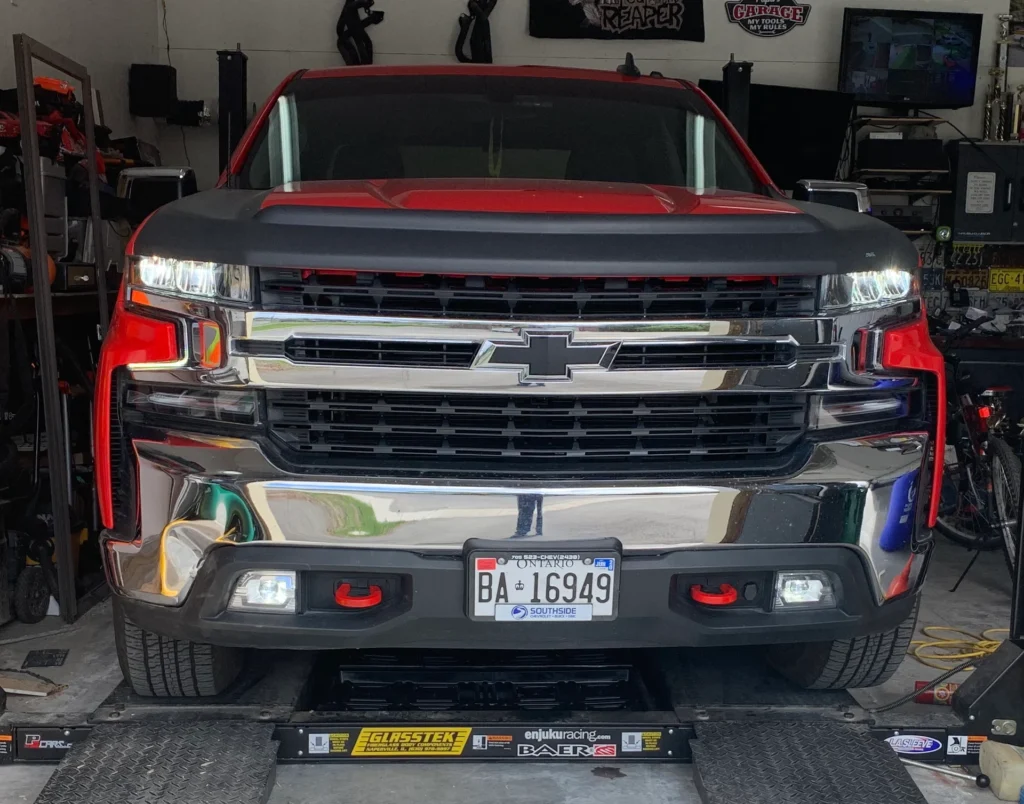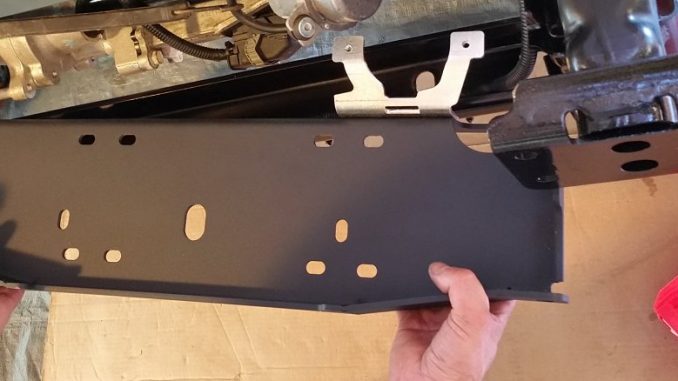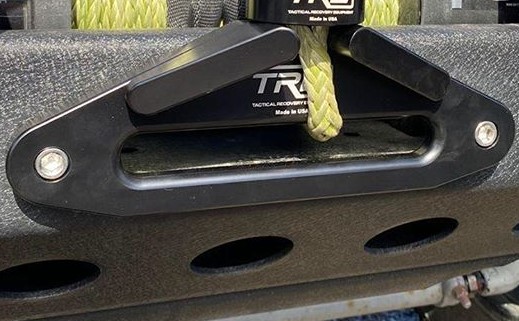Mounting a winch on your truck can be a game-change.
This guide will walk you through everything you need to know about winch mounting options, selecting the right winch, the tools you’ll need, and the step-by-step process to get your winch installed and operational.
Let’s dive in!
Necessary Tools and Equipment
To successfully mount a truck winch, you’ll need a range of tools and safety equipment, including:
List of Required Tools
- Socket and wrench set
- Drill and drill bits
- Screwdrivers
- Pliers
- Torque wrench
- Cutting tools (if modifications are needed)
Safety Equipment
- Safety glasses
- Gloves
- Hearing protection
- Jack stands (if raising the truck is necessary)
Preparing Your Truck for Winch Installation
Before you start, you need to prepare your truck:
Removing the Front Bumper (if necessary)

Depending on your mounting option, you may need to remove the front bumper. Follow your truck’s service manual for detailed instructions on how to safely remove it.
Checking for Interference with Existing Components
Inspect the area where you plan to mount the winch for any components that might interfere, such as air conditioning lines, radiators, or other wiring.
Ensure there is enough clearance for your best truck winch and mounting plate.
How to Install Truck Winch: Step-by-Step Winch Mounting Process
Installing a winch on your truck involves several detailed steps to ensure it functions correctly and safely. Here’s a comprehensive guide to help you through the process:
A. Installing the Mounting Plate

Position the Mounting Plate: Begin by identifying the best location for the mounting plate on your truck. This is usually on the front bumper or a designated area designed to handle the winch’s load.
Align the Plate: Place the mounting plate in position and ensure it aligns with the existing holes or the spots where you will drill new ones.
Secure the Plate: Use high-grade bolts to attach the mounting plate to your truck. Make sure to use the bolts recommended by the winch manufacturer for safety and reliability.
Tighten the Bolts: Tighten the bolts with a torque wrench to the specified torque setting provided in the winch’s installation manual. This ensures the mounting plate is secure and won’t come loose during winching operations.
B. Securing the Fairlead

Prepare the Fairlead: The fairlead guides the winch cable and protects it from abrasion. Select the appropriate fairlead (roller or hawse) based on your winch cable type (steel or synthetic).
Align with Mounting Plate: Position the fairlead on the mounting plate’s designated area, ensuring it aligns with the winch’s cable opening.
Attach the Fairlead: Use bolts to secure the fairlead to the mounting plate. Make sure the bolts are tight and the fairlead is firmly in place to prevent any movement or misalignment during winch operation.
C. Positioning and Attaching the Winch

Place the Winch: Carefully lift the winch and place it on the mounting plate, aligning it with the pre-drilled holes on the plate.
Insert the Bolts: Insert the provided bolts through the winch and into the mounting plate. It’s essential to use the bolts specified by the manufacturer to ensure they can handle the winch’s load.
Secure the Winch: Tighten the bolts using a wrench, ensuring the winch is firmly attached and will not shift during use. Double-check that all bolts are secure and properly tightened.
D. Wiring the Winch
Proper wiring is crucial for safe and efficient winch operation. Follow these steps carefully:
Battery Connections:
- Locate your truck’s battery and identify the positive and negative terminals.
- Connect the winch’s power cables to the corresponding battery terminals (red to positive, black to negative). Make sure the connections are tight to prevent any electrical issues.
Solenoid Installation:
- The solenoid controls the winch’s power. Install it close to the battery or winch, following the manufacturer’s guidelines.
- Secure the solenoid and connect it to the winch and battery using the appropriate cables. Ensure all connections are tight and well-insulated to prevent short circuits.
E. Testing the Winch Operation
Initial Test:
- Once all components are installed and connected, perform an initial test of the winch.
- Engage the winch control and test the “winch in” and “winch out” functions. Ensure the winch operates smoothly in both directions without any unusual noises or resistance.
Check Connections: Inspect all electrical connections to ensure they are secure and there are no loose wires or exposed contacts.
Final Adjustments: Make any necessary adjustments to the winch, fairlead, or mounting plate to ensure everything is aligned correctly and securely fastened.
Operational Test: Perform a full operational test by pulling a load (if possible) to ensure the winch performs as expected under a real load. This helps verify that the installation is robust and reliable.
Additional Considerations
To ensure your winch is safe and effective, consider the following:
Reinforcing the Mounting Area
Ensure that the area where you mount the winch is strong enough to handle the winch’s load.
This might mean reinforcing the truck’s frame or adding extra supports to prevent any damage or bending during use.
Protecting the Winch from the Elements
Your winch will last longer if you protect it from harsh weather conditions. Using a winch cover can shield it from rain, mud, and debris.
If possible, place the winch in a location that’s somewhat sheltered to minimize exposure to the elements.
Maintenance Tips for Longevity
Regular maintenance is crucial for keeping your winch in good working order. Regularly check and lubricate moving parts, inspect the cable or rope for any signs of wear or damage, and clean the winch after each use.
This helps to prevent rust and other issues that could affect performance.
Troubleshooting Common Installation Issues
If you encounter problems during or after installation, here are some common issues and solutions:
Clearance Problems
If the winch doesn’t fit properly, there may be obstructions or interference with other components. Check for any parts that might be in the way and adjust the mounting location or reposition the interfering components as needed.
Electrical Issues
Electrical problems can arise if connections are loose or the battery is not fully charged. Make sure all electrical connections are secure and properly insulated.
Check the battery’s charge and inspect the wiring for any signs of damage or wear.
Mounting Stability Concerns
If the winch feels loose or unstable, double-check all bolts and mounting points. Ensure they are tight and secure. If necessary, add additional supports or reinforcement to keep the winch firmly in place.
Safety Precautions When Using a Truck-Mounted Winch
Safety should always come first:
Proper Usage Techniques
When using a winch, it’s crucial to always wear gloves to protect your hands from the cable or rope, which can have sharp frays or splinters.
Additionally, always stand clear of the winch line while operating it. If the line snaps, it can cause serious injury.
Load Limits and Angles
Never exceed the winch’s rated capacity. Overloading the winch can lead to equipment failure and dangerous situations.
It’s also important to use proper pulleys and anchor points. This helps maintain safe angles during pulling, reducing strain on the winch and preventing it from tipping or damaging your truck.
Also check:
FAQ
Can I mount a winch on any truck?
Most trucks can accommodate a winch, but you may need specific mounting kits or custom fabrication depending on your vehicle’s make and model.
How much weight can my truck-mounted winch handle?
Your winch should handle at least 1.5 times your truck’s GVWR. Check the winch’s specifications for exact capacity.
Do I need to modify my truck’s frame to mount a winch?
In some cases, modifications may be necessary to provide a secure mounting point. Consult with a professional if you’re unsure.
How often should I maintain my truck-mounted winch?
Regular maintenance is key. Inspect and clean your winch after each use, and perform a thorough check every few months.
Can I use my truck-mounted winch for purposes other than vehicle recovery?
Yes, winches can be used for various tasks like moving heavy objects, pulling stumps, or even assisting in construction projects. Just ensure you follow safety guidelines.
Conclusion
Mounting a winch on your truck can greatly enhance its capability and your peace of mind. By following this guide, you’ll be well-prepared to choose the right winch, mount it correctly, and ensure it operates safely and effectively. Happy winching!

